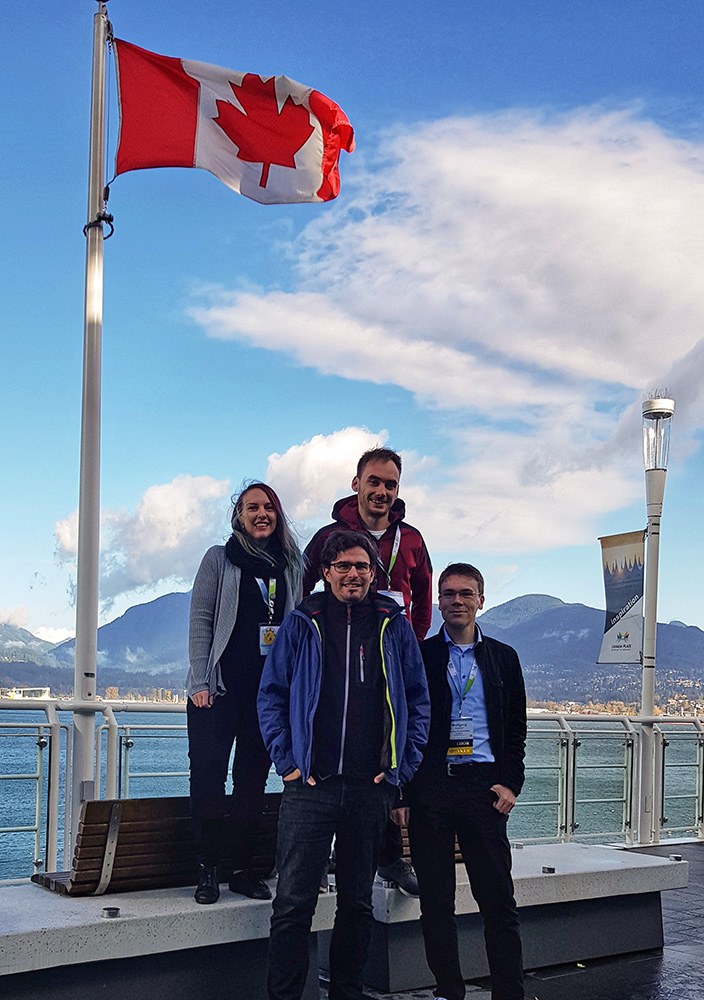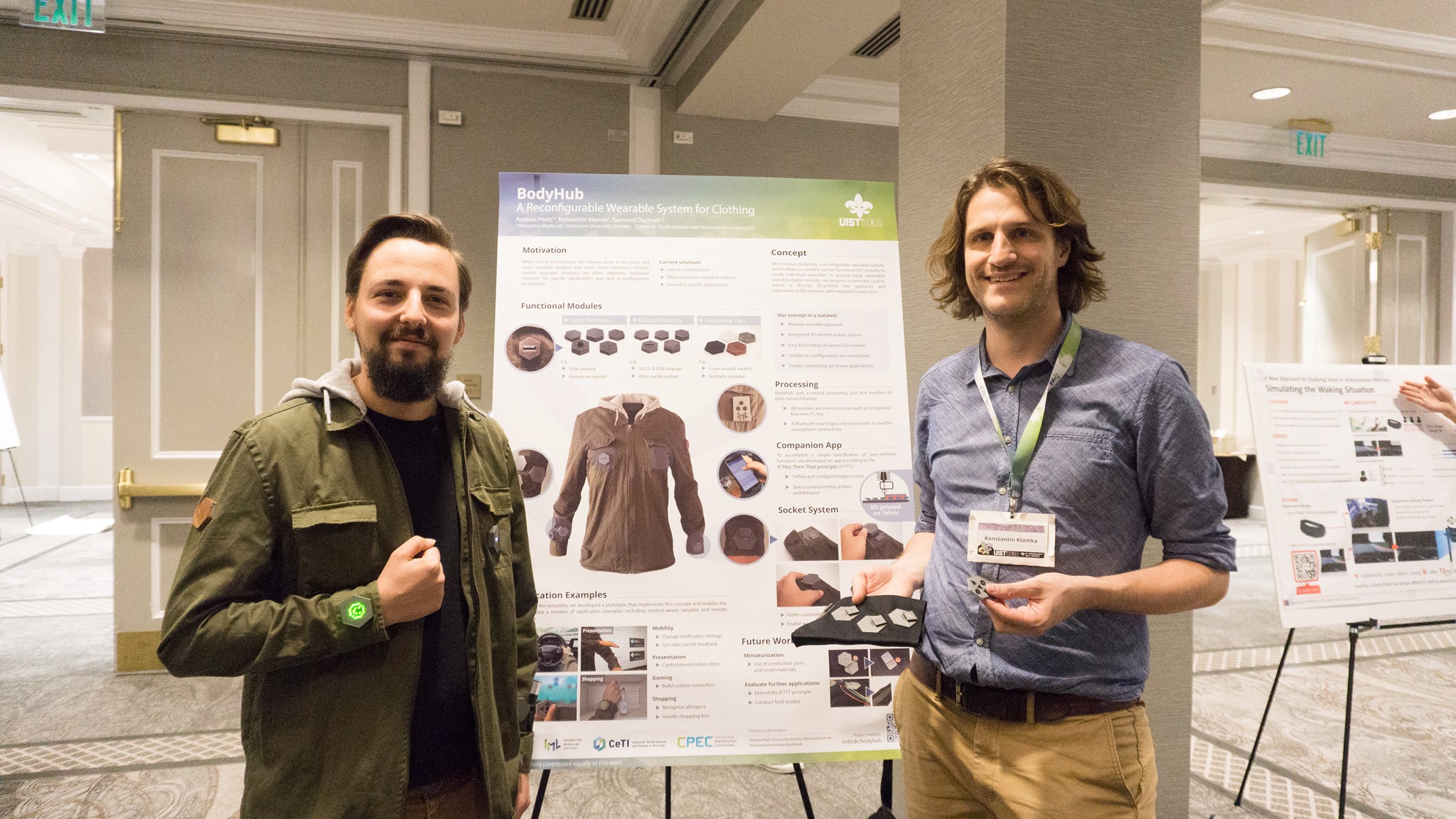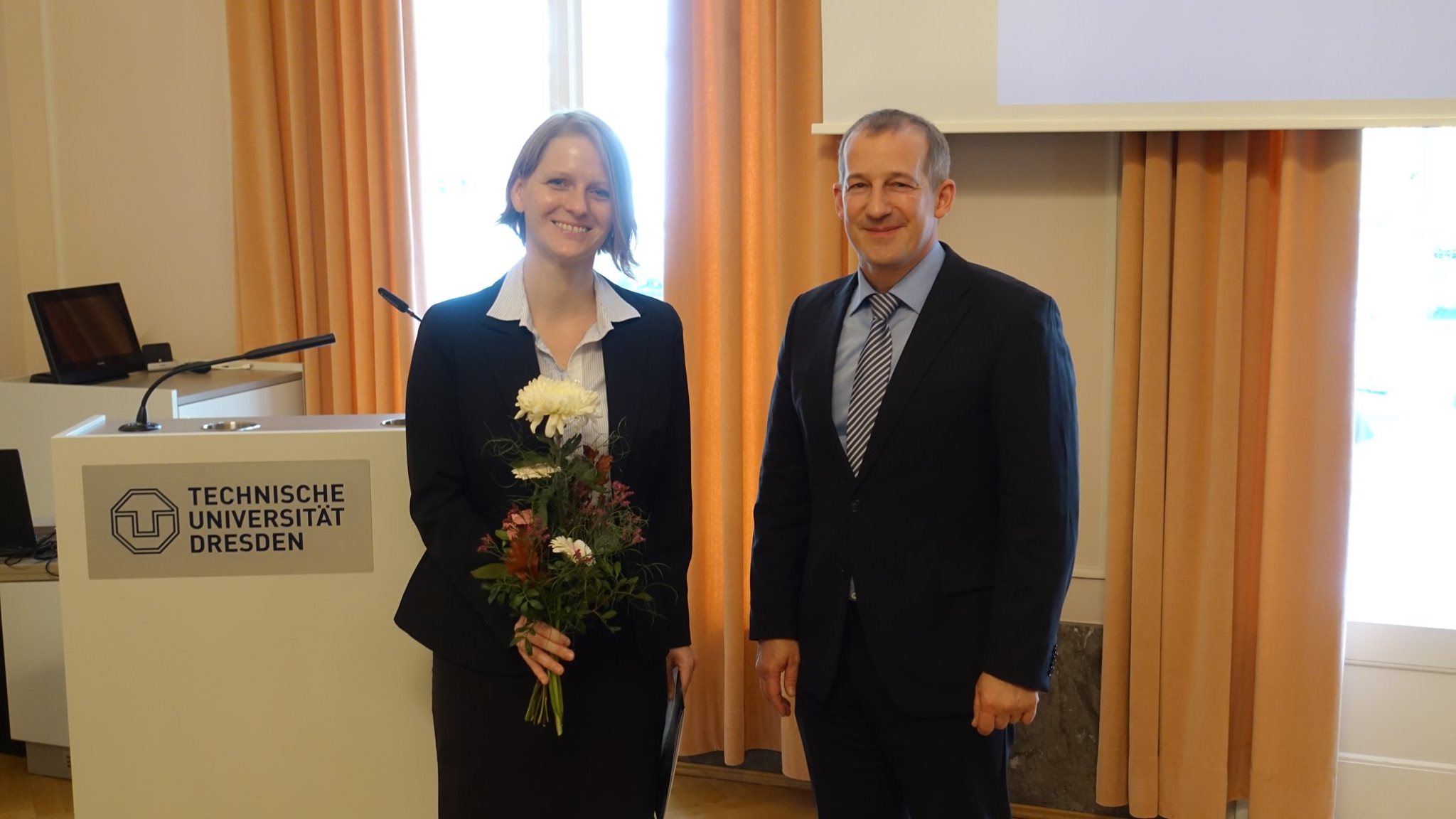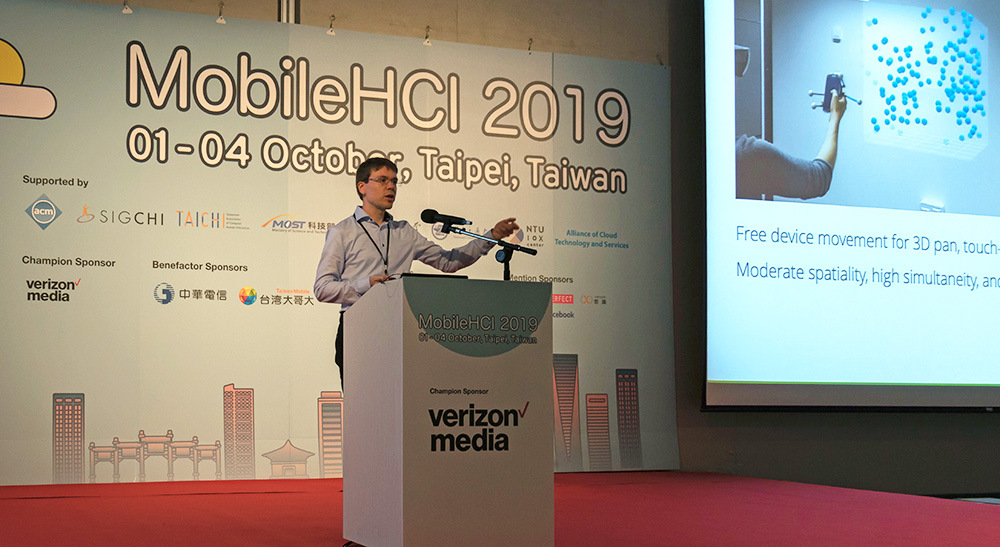This year, the IEEE VIS Conference took place in Vancouver, Canada. 20-25 October, scientists and practitioners from all over the world presented the newest research in the area of visualization. Of course the Interactive Media Lab was present as well. Tamara Flemisch, Ricardo Langner, Tom Horak and Wolfgang Büschel from our lab attended the conference. While Tamara and Tom served as Student Volunteers, Wolfgang gave a talk about our CG&A article Augmented Reality Graph Visualizations: Investigation of Visual Styles in 3D Node-Link Diagrams on Wednesday. More information, the paper PDF and the presentation slides can be found on the project page. Ulrik Günther and Aryaman Gupta of the CSBD/MPI-CBG were also there and presented a poster from the Cluster of Excellence Physics of Life and a short paper.




